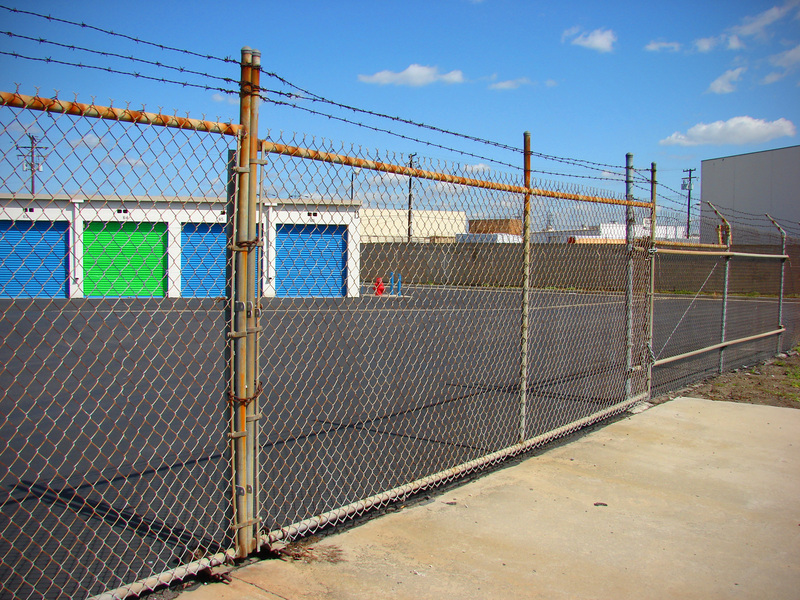Keep Your Freezer in Prime Condition During Inactivity
Posted on 07/06/2025
Keep Your Freezer in Prime Condition During Inactivity
A freezer is an essential household appliance for food preservation and minimizing waste. However, periods of inactivity--such as during extended vacations, seasonal closures, or low-usage months--can lead to issues like unpleasant odors, mold growth, or mechanical failure. To keep your freezer in prime condition during inactivity, it's crucial to follow systematic maintenance and storage procedures. This in-depth guide explores practical steps, expert tips, and answers to common questions, ensuring your freezer stays in top shape, ready for use whenever you need it.
Why Prepare Your Freezer for Periods of Inactivity?
Many homeowners overlook their freezers until something goes wrong. But caring for your freezer when it's not in use helps:
- Prevent unpleasant odors and molds.
- Avoid electricity waste or damage due to unnecessary running.
- Extend the lifespan of your appliance.
- Simplify restarting when you return or after the off-season.
- Protect your investment and reduce future repair costs.
Neglecting maintenance during inactivity can lead to costly issues and future inconvenience.

Step-by-Step Guide: Preparing Your Freezer for Inactivity
1. Empty and Sort the Contents
Begin by removing all items from your freezer. Inspect every package and discard expired, freezer-burned, or unidentifiable items. Store valuable foods in a secondary freezer or donate unneeded, safe food.
- Use food coolers for temporary storage if you need time for cleaning.
- Don't forget to check ice buckets, trays, or attached freezers in fridges.
2. Defrost Thoroughly
If your freezer is a manual-defrost model, defrosting is essential before inactivity. Even frost-free freezers benefit from a full defrost.
- Switch off the appliance and unplug it.
- Prop open the door to accelerate defrosting and avoid water stagnation.
- Soak up melting water with towels or use a shallow pan under the drain opening.
- Never use sharp tools to remove ice, as this may damage internal coils or plastic.
3. Deep Clean All Surfaces
After defrosting, give your freezer a thorough cleaning to remove mold, bacteria, and odors before long-term shutdown.
- Wipe interior walls, shelves, and gaskets with a mixture of baking soda and warm water (1 tablespoon per quart).
- Don't forget door seals and removable bins; they often harbor hidden grime.
- Rinse with a clean damp cloth, and then towel-dry all surfaces.
Tip: Avoid harsh cleaners or strong chemicals that may leave a residue or carry odors.
4. Address Mold and Odor Prevention
Mold thrives in damp, closed environments. If your freezer will be inactive for weeks or months, take extra measures:
- Scatter a few open boxes of baking soda inside the empty chamber to absorb lingering smells.
- Place a shallow bowl of ground coffee, charcoal, or silica gel packets if available for advanced odor control.
- After cleaning, prop the door slightly open using a rolled towel or appliance spacer. This prevents musty smells and mold.
Always dry every component thoroughly before closing the door!
5. Manage the Power Supply
Depending on the length of inactivity and your manufacturer's advice, choose the safest power management approach:
- Unplug the freezer for long-term inactivity (weeks or more), especially if completely empty.
- For short breaks, lowering the thermostat may save energy, but always check with your freezer's manual to see if this is recommended.
- Never leave a partially emptied freezer powered on--it wastes energy and increases failure risks.
Best Practices for Freezer Inactivity Maintenance
Details Matter: Gaskets, Vents, and Surfaces
To keep your freezer in optimal condition during inactivity, address spots that often get overlooked:
- Clean around the door gaskets: Use a gentle brush and mild soap to remove old food or debris from these flexible seals.
- Clear or dust condenser coils and air vents at the back or beneath the appliance. Dust build-up decreases efficiency and can cause overheating.
- Sweep beneath and behind the freezer to remove crumbs or pests' attractants.
- If your freezer has a water filter or ice maker, shut off the water supply and clean or replace filters as needed.
Humidity & Moisture Control
A closed, unused freezer can trap moisture, causing condensation and eventual mold or mildew.
- Leave the door ajar at least one inch, especially in humid climates or areas with poor air flow.
- Use a safe, secure spacer to prevent accidental closures by pets or children.
- If you have humidity problems, place packets of silica gel or dry rice in a shallow dish, replacing them every couple of weeks.
Protection from Rodents and Bugs
Rodent or insect infestations can occur in garage or basement freezers when not in use.
- Seal off entry points--inspect the area around cables, back grills, or drain tubes.
- Don't leave food remains, crumbs, or packaging around the appliance's exterior.
- For long-term inactivity, check on the freezer occasionally, or use natural repellents such as peppermint oil-soaked cotton balls around its base.
Restarting Your Freezer After Inactivity
Once you're ready to use your freezer again, a few simple steps will ensure it works efficiently from the start:
- Thoroughly check the inside for any mildew spots or stale odors. Wipe down with the baking soda solution if needed.
- Inspect gaskets, hinges, and vents for any dirt, blockages, or damage.
- Plug the appliance back in and allow at least 4-6 hours to reach optimal freezing temperature before adding new food.
- If you unplugged the water line, inspect for leaks or drips before reinserting the filter and activating the ice maker.
- Begin restocking only after temperature has stabilized below 0?F (-18?C).
Quick Troubleshooting Tips
- If the appliance makes unusual noises, double check for obstructions behind/underneath.
- Sour or musty odors may require another round of cleaning or placing fresh baking soda/charcoal inside for a day.
- Frost buildup immediately after restarting may mean the door didn't close properly--re-examine the seal.
Extra Tips for Long-Term Freezer Storage & Appliance Lifespan
Where Should You Store Your Unused Freezer?
If you need to store an unused freezer--not just leave it off but move it to storage--a few extra precautions can preserve your freezer during inactivity:
- Always store upright; never lay a freezer on its side or back, as this can disturb the compressor oil.
- Leave the door open a crack for ventilation. Use a bungee cord if you need to hold it in place.
- Cover the exterior loosely with a breathable sheet or tarp--never airtight plastic, which can trap moisture.
- Place mothballs or pest repellents nearby to keep animals away.
Seasonal Maintenance Tips
If your freezer is only used a few times per year (such as a holiday or hunting-season chest freezer), make a habit of:
- Inspecting it every two months for mold, odors, or pests.
- Running it briefly for an hour to circulate air and keep internal mechanics lubricated, if recommended by your manufacturer.
- Updating your calendar with scheduled cleaning checks.

Frequently Asked Questions (FAQ)
Should I leave my freezer plugged in when not in use?
Generally, it's best to unplug your freezer for periods of inactivity longer than one week, especially if empty. This avoids energy waste, reduces wear, and prevents malfunction from unnoticed issues.
Can I leave food inside if I'm not using my freezer for a short period?
If your break is under a week and the freezer will remain completely closed and powered, it is usually safe. For anything longer, food safety becomes a risk, and removing all perishables is strongly advised.
How do I prevent my freezer from smelling bad after a few weeks of not being used?
Clean thoroughly, dry all surfaces, and leave a box of baking soda (or similar odor absorber) inside. Keep the door propped open if unplugged, or ensure a tight seal if still powered.
Is it okay to store my freezer in a garage or shed during inactivity?
Yes, but it should be a dry, shaded area away from direct moisture. In climates with large temperature swings, insulate or cover the appliance lightly, and ensure small animals can't get inside.
What if I return and find mold or mildew in my freezer?
Don't panic! Mix a solution of one tablespoon baking soda with a quart of warm water, scrub every surface well, then wipe dry before use.
Conclusion: Keep Your Freezer in Prime Condition During Inactivity
Your freezer is a valuable asset that needs care even when it's not in active use. By following the simple yet essential steps above--from deep-cleaning and defrosting to humidity control and regular checkups--you can protect your food storage investment, save on future repair costs, and enjoy peace of mind. Whether you're preparing for a long trip, a seasonal break, or storing your appliance, these maintenance routines will help you keep your freezer in prime condition during inactivity for years to come.
Remember: smart preparation today ensures seamless performance tomorrow!







